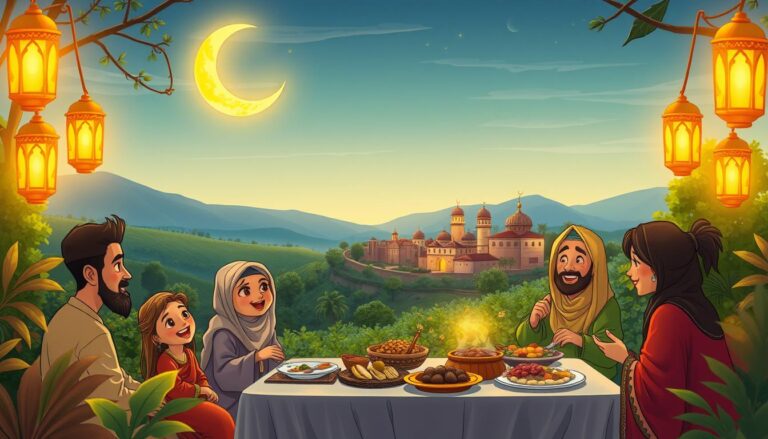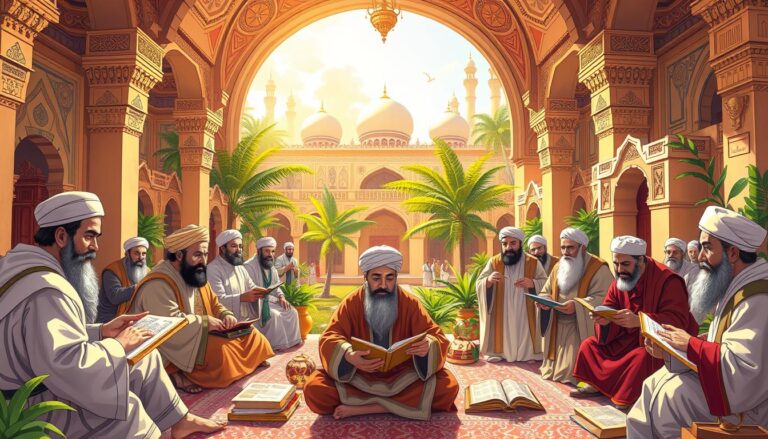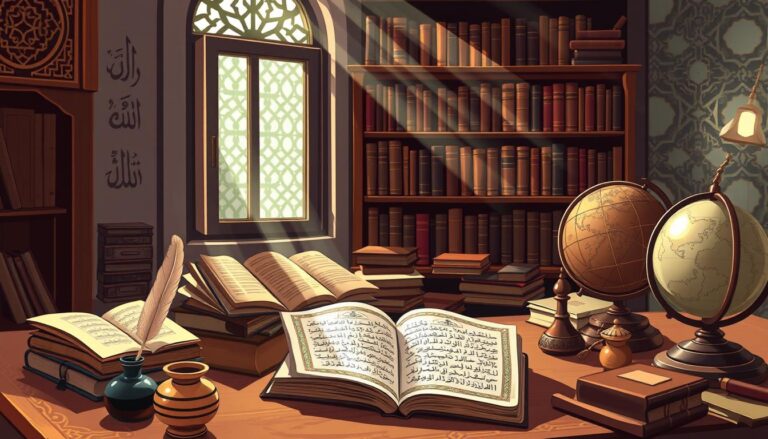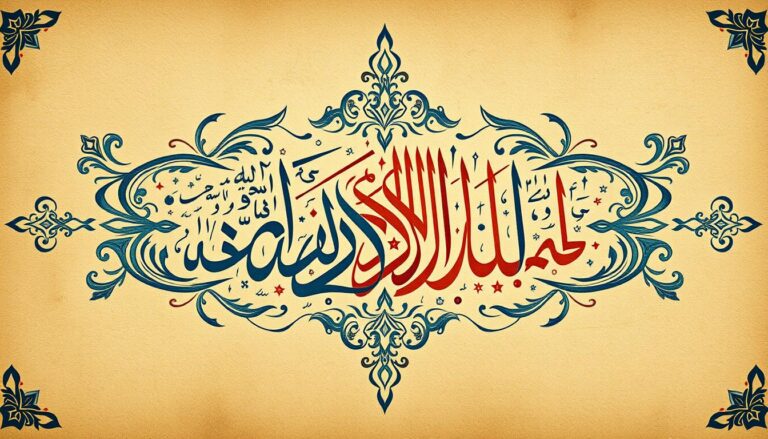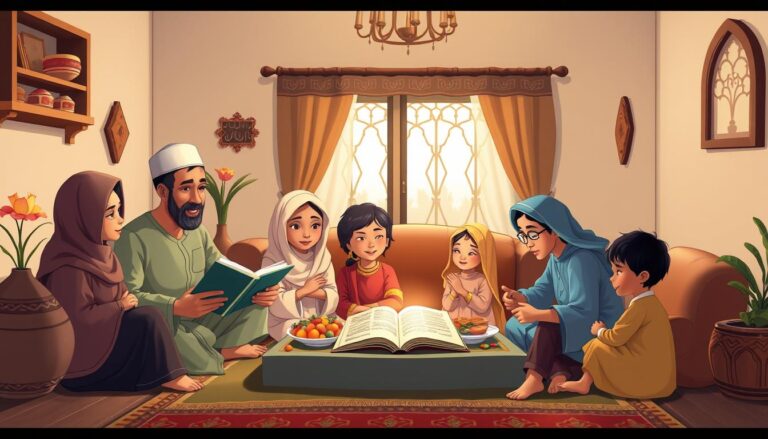5 Common Misconceptions About Muslim Women – Debunked!
Ever wondered if what you’ve heard about Muslim women is true? With nearly 1.8 billion Muslims worldwide, it’s time to clear up the myths. Let’s explore the real lives of Muslim women and challenge the stereotypes that confuse us.
Islam, a major world religion, is as varied as its followers. Only 20% of Muslims live in the Middle East and North Africa, showing that the Muslim world is not one-size-fits-all. In the U.S., one-fifth of Muslims are Black, highlighting the rich diversity of Muslim identity. These facts reveal the complex reality of Muslim women’s lives, far from common misconceptions.
Muslim women have made significant contributions throughout history. Today, they are making strides in education and leadership. Did you know that in some European countries, Muslim women are outperforming men in schools and universities? This fact alone challenges the stereotype of oppressed, uneducated Muslim women.
Despite progress, challenges remain. Muslim women, especially those wearing headscarves, face discrimination and are often the targets of Islamophobic crimes. This shows the need for a deeper understanding of their experiences.
Key Takeaways
- Islam is diverse, with Muslims spread across the globe
- Muslim women have historically held leadership roles
- Education rates among Muslim women are rising
- Islamophobia disproportionately affects Muslim women
- Stereotypes often overshadow the real experiences of Muslim women
Understanding Islam and Muslim Women
Islam is a rich tapestry of cultural diversity and religious beliefs. The Muslim population spans across continents, with each region bringing its unique traditions to the faith. This diversity is reflected in the lives of Muslim women, who come from various backgrounds and hold different perspectives.
The Diversity of Muslim Women
Muslim women are not a monolithic group. They represent a wide range of educational backgrounds, social classes, and political views. In the United States, the Muslim population is more racially diverse than the general public. Black Muslims now make up one-fifth of all Muslims in the country, primarily within the Nation of Islam sect.
Islam as an Abrahamic Faith
Islam is part of the Abrahamic faith tradition, sharing prophets with Christianity and Judaism. The Quran refers to Christians and Jews as “People of the Book.” Muslims believe that the Quran contains 114 chapters, known as surahs. The Islamic calendar began in A.D. 622, marking Muhammad’s journey from Mecca to Medina.
The Importance of Cultural Context
Understanding Islam requires consideration of cultural context. While Sunni Muslims make up nearly 90 percent of Muslims worldwide, Shiite Muslims have a significant presence in countries like Iran, Iraq, and Syria. The Ottoman Empire’s influence from 1517 to 1917 shaped Islamic practices in many regions. Today, experts predict Islam will become the largest religion globally by the end of the century, highlighting its growing importance in world affairs.
“Islam is not a religion of extremism. It is a religion of peace that forbids the killing of the innocent.”
The Myth of Oppression and Submission
Muslim women in Europe face many challenges and opportunities. Their stories are as varied as the women themselves. They don’t fit into simple stereotypes of being oppressed or submissive.
Empowerment of Muslim women in history
Muslim women have always been pioneers. They’ve been inventors, military strategists, and political leaders. In the 7th century, Islam gave them rights like keeping their identity after marriage, divorce rights, and inheritance.
Contemporary Muslim women leaders
Today, Muslim women are still making history. In the UK, more young Muslim women get university degrees than men. In the Netherlands, they’re taking on big roles in politics, media, and law.
Challenges faced by Muslim women in Europe
Despite their achievements, Muslim women in Europe still face big challenges. They often find it hard to get jobs that match their skills because of discrimination. Sadly, 42% of women in Europe have been physically abused by a partner since they were 15. Muslim women are sometimes targeted more, especially after terrorist attacks.
The battle for women’s rights and gender equality is ongoing. Muslim feminism is key in tackling these issues and fighting Islamophobia. It’s vital to understand the diversity of Muslim women’s experiences and move past harmful stereotypes.
Debunking the Stereotype of Conservatism
The idea that all Muslim women are conservative is a big mistake. The Muslim world is very diverse. With 1.8 billion Muslims, only about 15% are Arab. This means there are many different views on Islam, from very conservative to more open.
Muslim women, like women of any faith, have their own thoughts on religion and life. Some stick to old traditions, while others prefer new ways of understanding Islam. This variety shows that Muslim women are not all conservative.
In the U.S., where Muslims are about 1.5% of the people, they come from many places. They have backgrounds like Indonesian and Turkish. Each group adds its own flavor to Islam, showing there’s no single, conservative Muslim identity.
“Islam is not a rigid set of rules, but a guide that can be interpreted in various ways to fit different contexts and times.”
It’s wrong to think Muslim women are “backward” because of their faith. Many Muslim women are leading changes in their communities. They are sharing new stories and ideas, helping to break down old stereotypes.
The Headscarf Controversy: Choice vs. Coercion
The hijab is at the center of debates on religious freedom and personal choice. Many Muslim women wear it as a sign of faith and identity. In fact, studies show that 40% of Muslim women in the U.S. wear a hijab at least sometimes.
The Meaning of Hijab in Islam
In Islam, the hijab stands for modesty and devotion. It’s more than just clothing; it’s a way of life. The Quran guides both men and women to dress modestly. Many women choose to wear the hijab freely, not because they have to.
Personal Agency and Religious Expression
Choosing to wear a hijab is a personal decision for many Muslim women. They see it as empowering and a way to express their faith. Some start wearing it at puberty, while others choose later in life. Hijabis work in various fields, from medicine to law, breaking stereotypes about religious discrimination.
Legal Issues in Europe
In Europe, laws about religious attire vary. Some countries ban face coverings in public spaces, affecting women who wear niqabs or burqas. These bans raise questions about religious freedom and personal choice. Critics say these laws discriminate against Muslim women and limit their access to education and employment.
The headscarf debate shows the complex relationship between religious freedom, personal choice, and societal norms. It’s important to listen to Muslim women’s voices and respect their decisions about their attire.
Education and Muslim Women: Breaking Barriers
Muslim women’s education has seen big improvements lately. In Europe, Muslim girls go to school just like everyone else. The UK is a great example, where more young Muslim women are getting university degrees than Muslim men. This shows how Muslim women’s academic achievements are growing.
Islam has always valued education. It teaches that seeking knowledge is important for everyone, no matter their gender. This idea goes back to the 9th century when Fatima Al-Fahri started the University of al-Qarawiyyin in Morocco. Her work still motivates Muslim women today.
Education is empowering Muslim women, as shown by recent numbers. A study found that 56% of Muslim women now work for their career and financial freedom. This change shows how education is changing Muslim women’s lives.
“Seek knowledge from the cradle to the grave.” – Prophet Muhammad
Even with progress, there are still hurdles. Some groups still limit women’s roles in religious activities. But, 38% of mosques and communities are pushing for women’s involvement. This shows a growing understanding of the value of women’s education and empowerment in Islamic societies.
- 86% of Muslim women view hijab as a personal choice
- 78% of female converts to Islam do so based on personal spiritual convictions
- 72% of Muslim men and women share similar standards on pre-marital contact
These numbers show how Muslim women’s education and empowerment are changing. As barriers fall, Muslim women are making their mark in academia and more.
5 Common Misconceptions About Muslim Women – Debunked!
Muslim women face many misconceptions in society. Let’s look at and clear up five common myths about their rights, education, and roles in Islam.
Misconception 1: Muslim women are uneducated
This belief is far from true. Islamic teachings support learning for both men and women. Many Muslim women have become doctors, lawyers, and scholars. For example, Dalia Mogahed became the first Muslim woman advisor in the White House in 2009, showing the educational achievements of Muslim women.
Misconception 2: Islam forbids women’s education
Islam actually supports education for everyone. The Prophet Muhammad set aside special days to teach women, showing the value of learning. This commitment is seen in the success of Muslim women in various professional fields worldwide.
Misconception 3: Muslim women have no rights
Muslim women’s rights are well-defined in Islam. They have the right to own property, get an education, work, and participate in politics. In many Muslim-majority countries, women can keep their maiden names after marriage and have access to women-only spaces for sports and recreation, ensuring their comfort and modesty.
Misconception 4: Muslim women cannot work
Islam does not stop women from working. Many Muslim women have successful careers in different fields. While some cultural practices might affect women’s employment, progressive Muslim societies see women in top positions in their professions, making significant contributions to their communities and economies.
Misconception 5: Islam promotes violence against women
This is a harmful misconception. Islam strongly condemns violence against innocents and values the sanctity of life. The Quran encourages kindness and respect between spouses. It’s important to separate cultural practices from true Islamic teachings when discussing gender equality in Muslim communities.
By clearing up these misconceptions, we can work towards better understanding and promote gender equality within Islamic contexts and beyond.
The Truth About Gender Equality in Islam
Islam fights for gender equality, giving women rights that were ahead of its time. Islamic feminism focuses on justice and equality. Since the 7th century, Muslim women have had property rights, education, and political roles.
The Qur’an sets clear rules for inheritance, making sure women get their share. This was a big step forward, especially when women in the U.S. got the vote in 1920. Islam teaches that both men and women should seek knowledge.
“The best among you is the one who doesn’t harm others with his tongue and hands.” – Prophet Muhammad
Islam does not support violence against women. There’s no excuse for honor killings in Islam. The religion honors mothers more than fathers. This shows Islam’s commitment to equality.
- Muslim women can own property
- Education is encouraged for both genders
- Women have the right to work and participate in politics
- Islam grants women inheritance rights
Islam is flexible and adaptable, as seen in the U.S. where 40% of Muslim women wear headscarves. This shows the wide range of interpretations. Only 20% of Muslims live in the Middle East and North Africa.
Muslim Women in the Workforce: Challenges and Achievements
Muslim women face unique challenges in the job market. Workplace discrimination is a big issue, stopping them from getting jobs that fit their skills. Yet, many Muslim women have reached great heights in their careers.
Discrimination in the Job Market
There’s a sad trend of discrimination against Muslim women at work. They often face both direct and indirect bias, but many don’t report it. The lack of research makes it hard to understand the full extent of this problem.
Fear of backlash and being ostracized keeps many Muslim women from speaking out. This silence hides the true extent of workplace discrimination.
Success Stories of Muslim Women Professionals
Despite the hurdles, many Muslim women have achieved great success. They shine in politics, law, and media. Their stories show that Muslim women can thrive in different fields if given a fair chance.
Initiatives Promoting Muslim Women’s Employment
Groups are working to support Muslim women in their careers. They aim to show the strength and empowerment of Muslim women. By sharing success stories and offering resources, these efforts help overcome barriers and challenge stereotypes.
- Raising awareness about workplace discrimination
- Providing mentorship and networking opportunities
- Advocating for inclusive workplace policies
While progress has been made, more is needed for equal opportunities for Muslim women. By tackling discrimination and celebrating their achievements, we can build a more inclusive workplace for everyone.
The Role of Muslim Women in Family and Society
Muslim women are key in family and society, showing strong Muslim family values. They make big contributions to society. Islam values women at every stage of life, from being daughters to wives and mothers. It teaches respect and honor for women, allowing them to share opinions and debate.
Islam changed the game for women, unlike before. It gave them rights to inherit, own property, and be legally recognized. The Quran stopped the old practice of forcing women to inherit against their will.
Muslim women do more than just family work. They are involved in education, politics, and work. In fact, eight countries have had Muslim women as leaders since 1988, showing their leadership skills.
“Islam holds women in high regard and requires men to treat them with honor and respect.”
But, there are still challenges. In some places, wrong interpretations of Islam lead to women being treated unfairly. This shows the importance of learning about Islam correctly to fight against unfair treatment.
As Islam grows, with 1.8 billion followers, Muslim women’s roles become more important. Their work helps build understanding, equality, and stronger communities.
Addressing Islamophobia and Its Impact on Muslim Women
Islamophobia is a big problem for Muslim women all over the world. It mixes with gender bias, making things even harder.
Definition and manifestations of Islamophobia
Islamophobia is fear, hostility, or prejudice against Islam and Muslims. It shows up in many ways, like verbal abuse and physical attacks. UN Secretary-General António Guterres has spoken out against these acts of anti-Muslim hatred.
Intersectionality of gender and religious discrimination
Muslim women deal with double discrimination because of their gender and faith. This makes them very vulnerable to hate crimes. In 2006, 154 discriminatory acts against US Muslim women were because of wearing a hijab.
Strategies to combat Islamophobia
To fight Islamophobia, we need a few key steps:
- Education: Teach people about Islamic culture and beliefs
- Media representation: Show Muslims fairly in the media
- Legal protections: Make laws against religious discrimination
- Data collection: Track hate speech incidents
- Trust-building: Work on interfaith dialogue and community engagement
The United Nations has started something big. They’ve made March 15 the International Day to Combat Islamophobia. This is to help people understand and accept each other better.
Media Representation and Stereotypes of Muslim Women
Media bias greatly affects how people see Muslim women. Despite Islam being the second-largest religion with 1.6 billion followers, Western media often shows them in a bad light. This creates stereotypes of them being oppressed, uneducated, and helpless.
After the 9/11 attacks, Western media’s portrayal of Muslim women became even more one-sided. Time, Newsweek, and big news networks focused on their supposed oppression. This ignored the many achievements and experiences of Muslim women around the world.
Many Muslim women are now fighting these stereotypes. They use social media to show their success in different areas. Bloggers and content creators share real stories to challenge false beliefs. The 2021 sitcom “We Are Lady Parts” by Nida Manzoor is a great example of positive Muslim woman representation.
But, there’s still a lot to do to improve how Muslim women are shown in the media. By showing a variety of Muslim women’s stories, media can help break down stereotypes. This is key to fighting Islamophobia and building a more welcoming society.
Source Links
- These Stereotypes About Muslim Women Just Aren’t True
- Myths and Realities about Muslim Women: Part I — CAIR-Chicago
- Islam ‑ Five Pillars, Nation of Islam & Definition | HISTORY
- 7. How the U.S. general public views Muslims and Islam
- 8 Things Muslims want you to know
- Debunking the Myth of the ‘Migrant Crime Wave’
- From the Oppressed to the Terrorist: Muslim-American Women in the Crosshairs of Intersectionality
- Women in Islamic Law: Examining Five Prevalent Myths | Yaqeen Institute for Islamic Research
- 10 COMMON MISCONCEPTIONS ABOUT THE HIJAB – World Hijab Day
- The 10 Biggest Misconceptions about Muslim Women
- Unveiling the Veil: Debunking the Stereotypes of Muslim Women
- Five Misconceptions about Muslim women
- Busting Common Myths About Islam
- 5 Myths About Islam: Debunked – Islam Faith
- Inquiry into discrimination and barriers in employment
- Factors influencing the experienced career success of Muslim women: A South African study | Agherdien
- The Rights of Women in Islam and Some Misconceptions An Analysis from Bangladesh Perspective
- Myths and Facts about Muslim People and Islam
- Misconceptions about women in Islam (Submission) | Submission.org
- International Day to Combat Islamophobia | United Nations
- Discrimination against Muslims in the United States – Ballard Brief
- Islamophobia | Meaning, History, & Portrayal of Muslims | Britannica
- The Mainstream Misrepresentation of Muslim Women in the Media
- HARAMED AND DANGEROUS: A THEMATIC EXAMINATION OF MUSLIM WOMEN’S REPRESENTATION IN WE ARE LADY PARTS
- Media Portrayals of Religion: Islam


